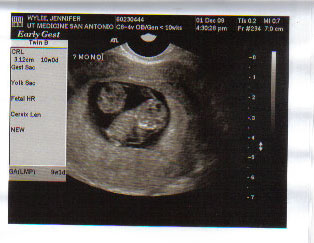

Nearly everyone is looking forward to the labour pains, which would signal your baby’s arrival. If you are pregnant with twins or multiples and are in the 37th week of pregnancy, we totally understand how exhausted and tired you are of the seemingly unending pregnancy. if twin pregnancy from in vitro fertilization (IVF) - gestational age should be made from date of embryo transfer.Being 37 weeks pregnant with twins or multiple babies can leave most mothers frustrated, while their babies are still hoisting comfy inside their body.single placental mass (note, however, that most dichorionic pregnancies have placental masses that abut each other and can be often mistaken for single placenta, especially in the third trimester).however, the thickness is however subjective and becomes progressively more difficult to assess (98% accuracy in the first trimester vs 83% later).separate placental masses (note, however, that most dichorionic pregnancies have placental masses that abut each other.separate gestational sacs with chorion extending between them ( 10 weeks): thick intertwin membrane, with more than two layers.It is easiest to determine chorionicity and amnionicity in the first trimester.

Finding the placental sites of umbilical cord insertion are important because marginal and velamentous insertions increase risk 5. The number of fetuses and their chorionicity and amnionicity must be determined, as well as monitoring for complications and anomalies. The role of ultrasound is crucial adequate in the monitoring of the pregnancy and planning for delivery. Radiographic features Ultrasound assessment of multi-fetal pregnancies Conjoined twins occur only in monoamniotic pregnancies. Monoamniotic twin pregnancies share the one amniotic sac and are prone to entangled cords, as well as all the monochorionic complications (since you cannot be dichorionic-monoamniotic). twin reversed arterial perfusion sequence ( TRAPS)Īmniotic fluid discordance is the most reliable predictor of poorer outcome.twin anemia polycythemia sequence ( TAPS).Monochorionic twin pregnancies share the one placenta and are therefore prone to hemodynamic complications such as:



 0 kommentar(er)
0 kommentar(er)
